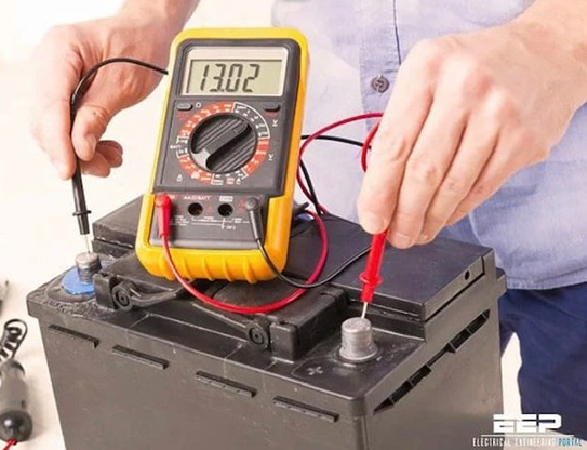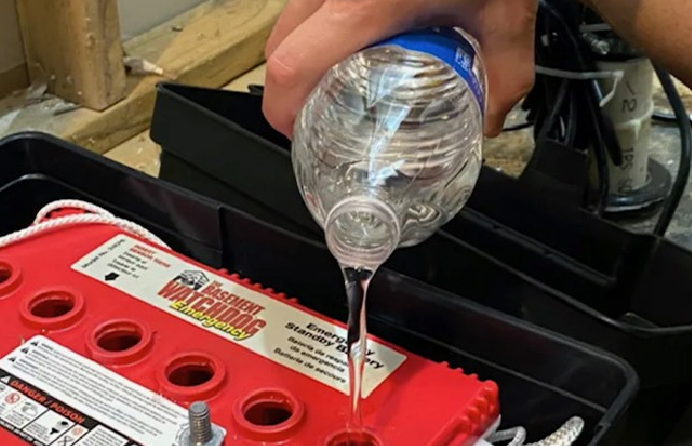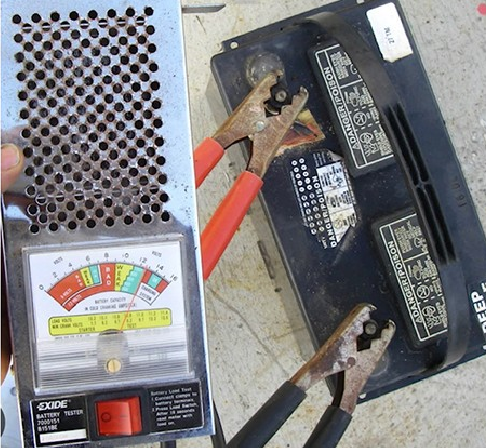Ask Andrew: Battery Tests – Part 1
Modern Boats can be quite complex. In days-gone-by, a boat might have a single battery to start an engine, or to power some simple lighting. Boats produced over the last decade can have multiple batteries, connected in series and/or parallel, with 12, 24 and 48V systems, powering delicate and precision electronics.
Despite the complexity of the systems, powering delicate devices: Batteries are batteries.
Diagnosis of any electrical problem begins with the power source. In any 12, 24 or 48V system, or in any devices powered by batteries aboard, the batteries should be tested (and any issues solved there) as a first step.
This is true for lead-acid, AGM or Lithium batteries, whether as a stand-alone battery, or wired in series or parallel.
Test #1 – The visual test
Lots can be seen by examining a battery at rest: Does the battery have any physical damage? Is there any bulging or any deformity? Is there any corrosion, discoloration or build-up at the terminals? Are the threads of the studs clean, are the nuts the appropriate size? Any physical damage would be addressed before putting the battery to use.
A further test, in the case of lead-acid batteries, is to check the fluid levels inside the battery. Once appropriate gloves and goggles are worn, the caps or cover can be removed to check the level of fluid.
When the battery is completely discharged, the fluid inside will be water. When the battery is charged, the fluid will be sulphuric acid. Because of this, caution should be taken when removing the caps and checking levels. The fluid should be at a height that covers the plates inside the casing. If fluid needs to be added, distilled water can be used. This should be added slowly and carefully, either using a funnel or a device like a turkey-baster. Caps should be carefully replaced, and the battery charged after topping up the fluid.
Test #2 – The voltage test
At rest, a fully charged battery should read at 12.6 volts. If the battery is being charged by a battery charger, the voltage will read between 13.4 and 13.8 volts. If the battery is being charged by an alternator (as the engine is running), the voltage will read 14.2 volts.
The voltage can be measured using a device called a voltmeter or a multimeter. When testing voltage, the test should be done at the source: Don’t rely on the boat’s voltmeter or display. Instead, use a handheld device, directly on the battery posts.
To perform the test, set the voltmeter or multimeter to read DC voltage, and set the leads per the manufacturer’s recommendations to read voltage. Place the red (positive) lead on the positive post of the battery. Place the black (negative) lead on the negative post of the battery. The device should provide a reading. Record it for future reference.
If the voltage is less than 12.6V, charge the battery. It can be charged using the boat’s battery charger, by a remote charger, or by running the engine and utilizing the engine’s alternator. While charging, test the battery’s voltage again and record the results. This will allow you to confirm that charging is happening as expected, based on the values above.
Test #3 – The load test
So far, we’ve been testing a battery at rest. Essentially, we’ve answered the question ‘is there enough voltage to push the required current’. We still haven’t confirmed two very important elements:
a) can the battery maintain or hold that voltage?
b) can the battery push the current that will allow appliance to run?
This is where the load test comes in testing if the battery has sufficient health to perform work: pushing current to an appliance.
A load tester – colloquially knows as a ‘toaster’ is a simple device: the positive clamp attaches to the positive post of the battery. The negative clamp attaches to the negative post of the battery. A test button is depressed, which puts the battery under a load (it begins pushing current across the load tester). The results are shown on a simple scale: good/weak/bad.
It’s best to run this test while the battery is charged, but not under any other load (ie the battery is disconnected). The result will allow you to understand how the battery will perform when the battery is used to start an engine or power an on-board appliance.


